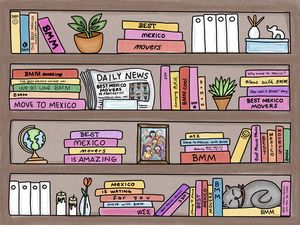Your Solution for Moving to or from Mexico

Does this describe how you feel about moving your cherished household goods to or from Mexico:
- Overwhelmed?
- Confused?
- Concerned that you may not be doing everything right, or paying way more than you should?


You don’t have to feel this way any longer, because Best Mexico Movers has revolutionized the process of moving your precious household goods to Mexico or back.
When you choose Best Mexico Movers, your move to or from Mexico will be simple, easy, and affordable.
(You can relax now.)

Best Mexico Movers process is focused on satisfying your needs, not ours.
Here's what we don't do... 👎
We don’t start our relationship with you by:
- Emailing you a long list of things you can and cannot do.
- Overwhelming you with regulations and information you don’t need to know.
- Sending you a multi-page email with what you must do in order to use our service.
Instead, we do this... 👍
The first thing we do is always the same:
- We talk with you (like a real person, not via email) and we listen to what you want.
- Then, only afterwards, we customize your move around your needs, and your budget.
Now that you know what we do and what we don’t do, what should you do?
It all depends...


If you would like to know what your options are to move your precious household goods to or from Mexico,
either with or without using Best Mexico Movers, click here:


If you have decided to use a mover and want to see what makes us different from the conventional / antiquated
international moving companies, click here:


Would you like to know why you should trust Best Mexico Movers to help you during one of the most important and
otherwise stressful times of your life? If so, click here:


If you would like read what past customer's say about our services,
check out our large collection of reviews and testimonials here:


If you have questions or would just like to talk to us, either about moving to Mexico or moving back from Mexico,
please message us here:


If none of this applies to you and you would just like additional information about preparing your move to Mexico,
actually moving here, or what to do when you get here, we invite you to browse our helpful articles:

